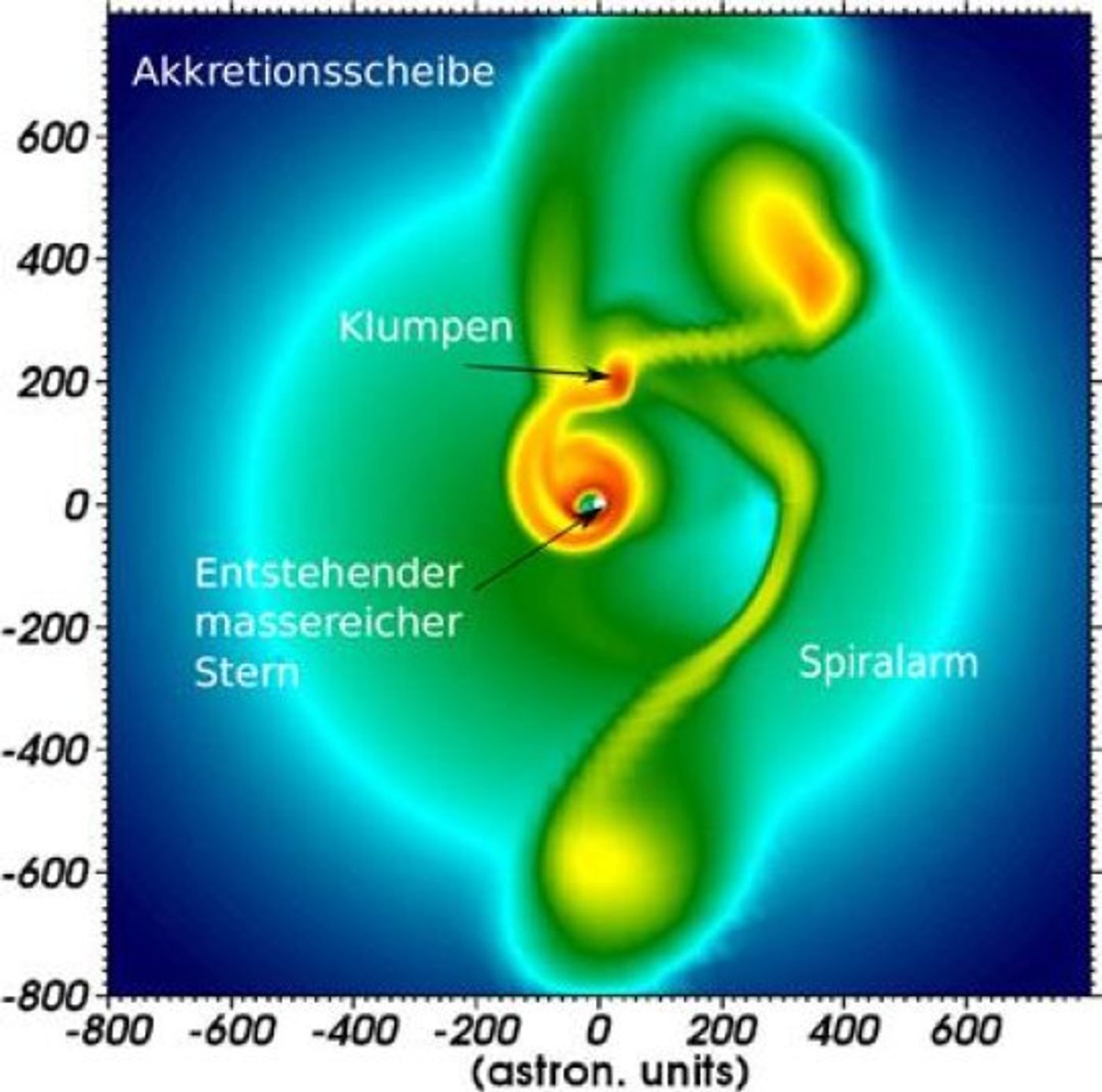Unraveling the Mystery Behind the Birth of Massive Stars
It’s no real mystery how stars in space form, but perhaps what still is a mystery is how those supermassive stars that seem to tip the scales happen to form.
Supermassive stars can be several times larger than our Sun. In some cases, they can be exponentially larger. For example, VY Canis Majoris makes our Sun look like a dot drawn by a ballpoint pen on paper.

Supermassive stars are notoriously difficult to study. You would think that because they were so big, we’d have no trouble at all spotting them, but this theory isn’t true. In fact, the reason they’re so large is because they were formed out of a lot of matter and it just so happens that a lot of that matter forms dust clouds and things that like to obstruct the views of our telescopes.
But beside the point, how can stars possibly get so big? It’s difficult to say because we haven’t had a lot of chances to observe them. Obviously, it takes a lot of mass and a lot of gravity. But it turns out a lot more goes into their formation than previously thought.
A new supermassive star formation model proposed by German researchers, on the other hand, has potential to take the cake. It used simulations in computer models to help better explain where supermassive stars come from and how they’re formed.
The model is described in the Monthly Notices Letters of the Royal Astronomical Society and proposes pulses of extreme luminosity that normal-sized stars don’t normally put out during formation.

Image Credit: Institute for Astronomy and Astrophysics, Tübingen University
During the process, an accretion disk is formed as the material collapses under gravity, and this disk continually feeds the core of the star, which continues to grow as more matter falls in.
This is pretty typical of most star formations, but in the case of larger star formations, something happens that’s out of the ordinary. Large fragments of the accretion disk can fall into the star’s core slowly, and this causes a lot of energy to be released at once, exhibiting luminous bursts.
"Like throwing logs into a fireplace, these episodes of clump consumption produce violent luminosity outbursts outshining the collective effect of one hundred thousand Suns," explained researcher Eduard Vorobyov.
These clumps may even result in what are known as solar companions, which can form binary star systems as commonly seen in systems that have supermassive stars.
Although we haven’t observed this up close yet, the simulations appear to have potential in explaining some of the things we don’t yet have the answers to. This still remains just research, and not fact, but it’s interesting to see the theories our leading astronomers can come up with.
Source: Science Daily








